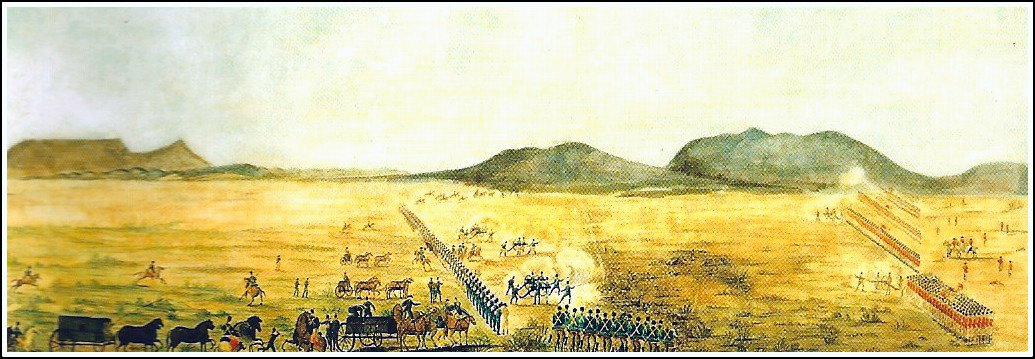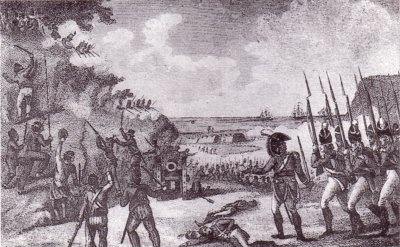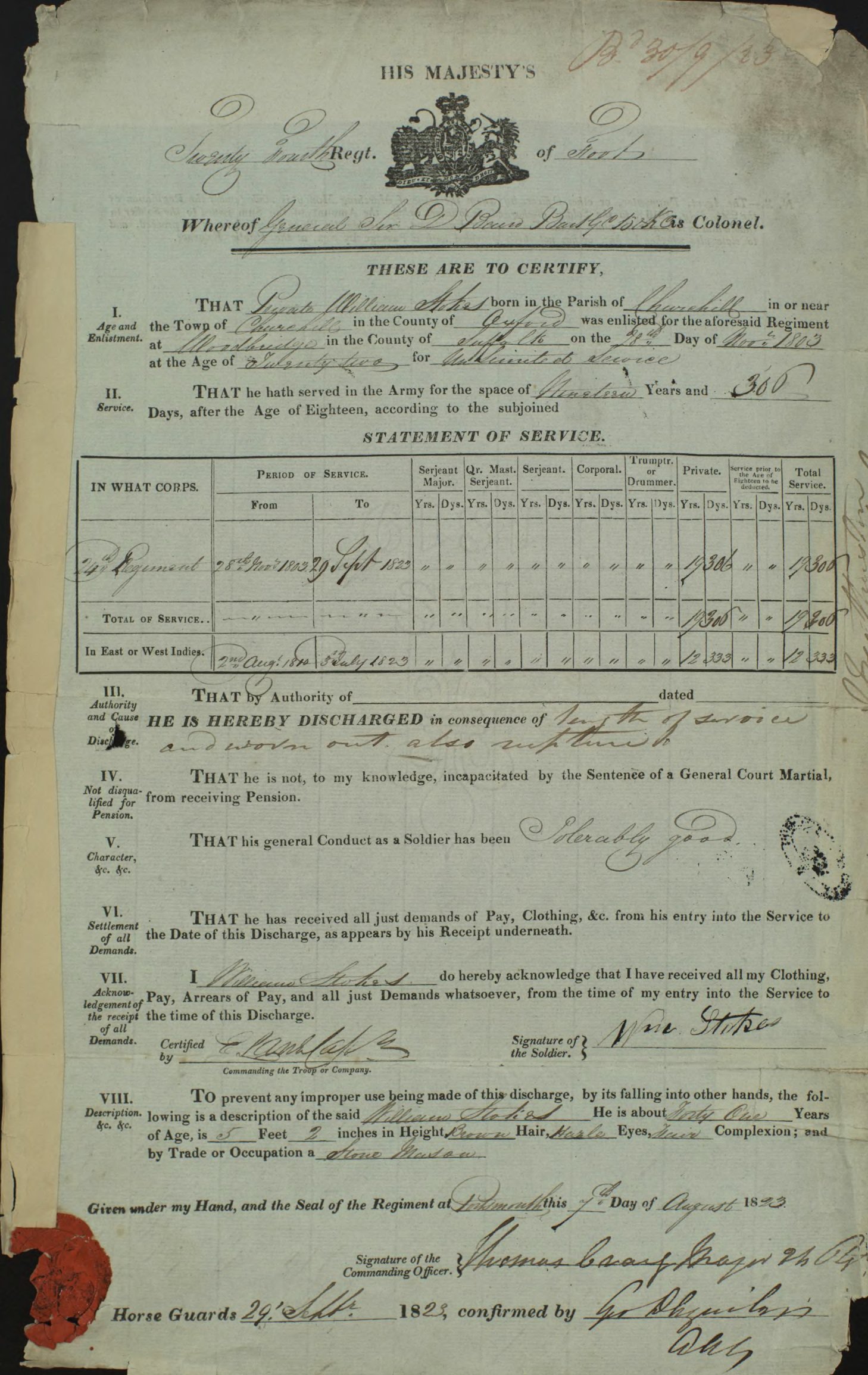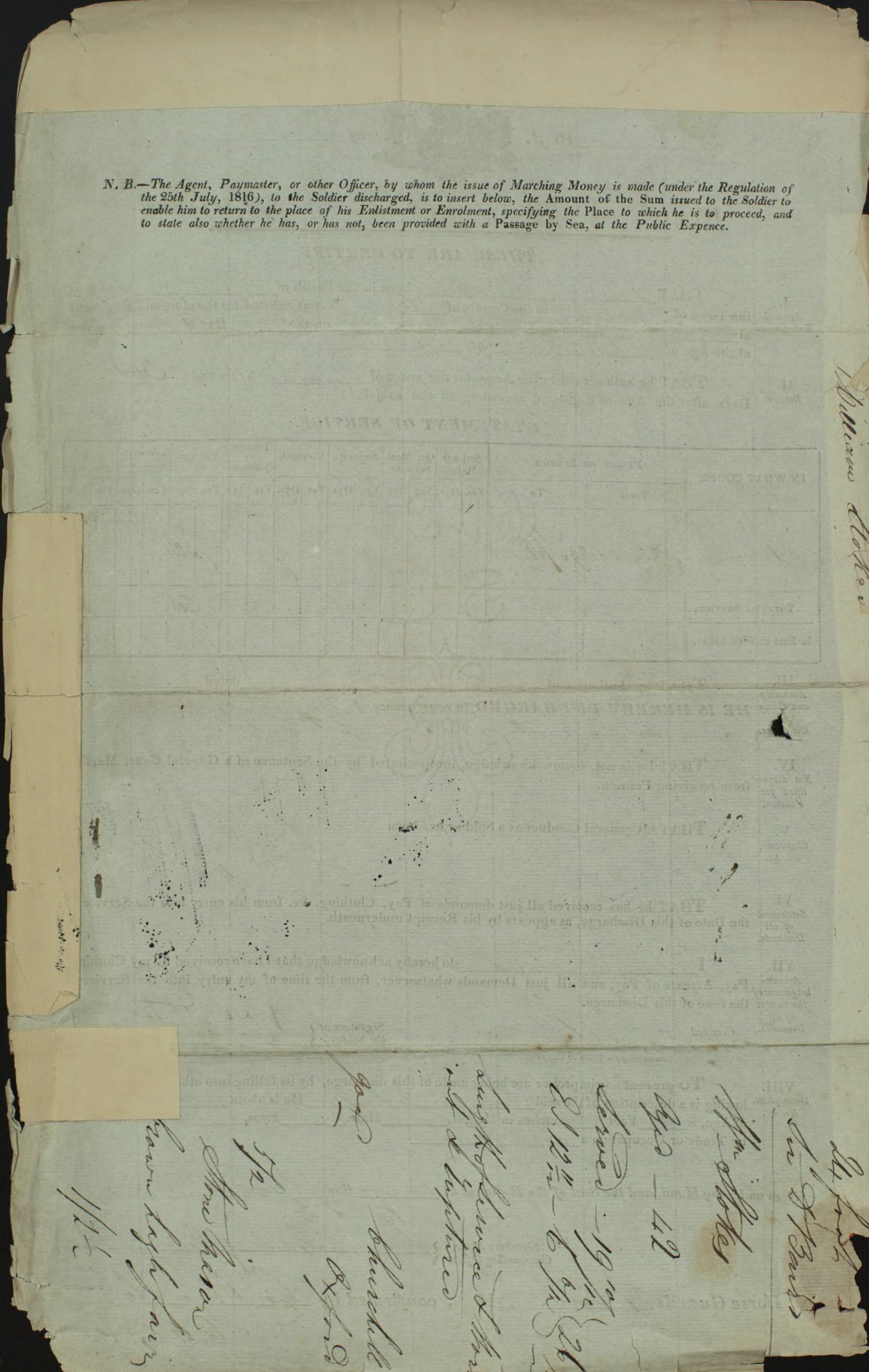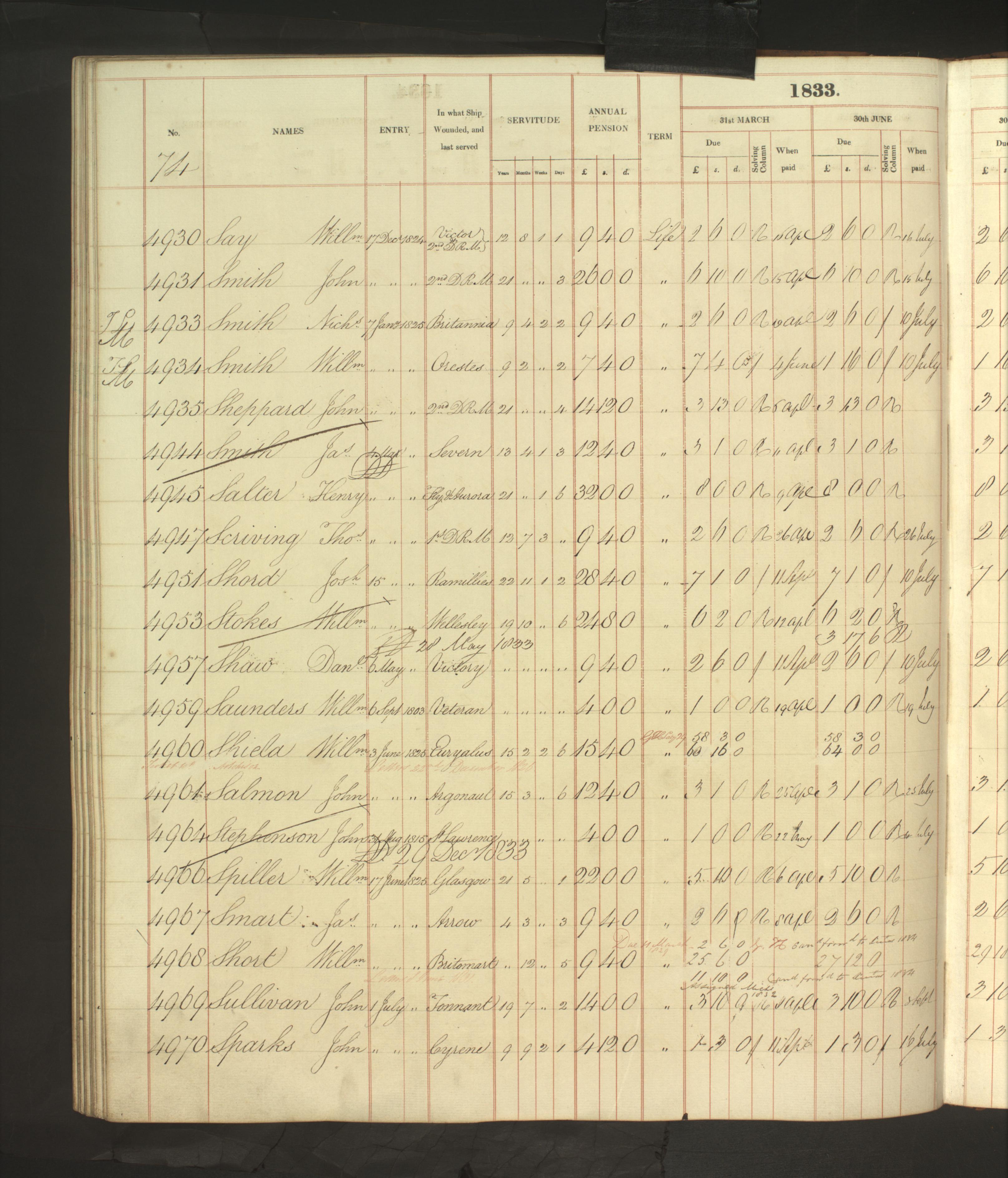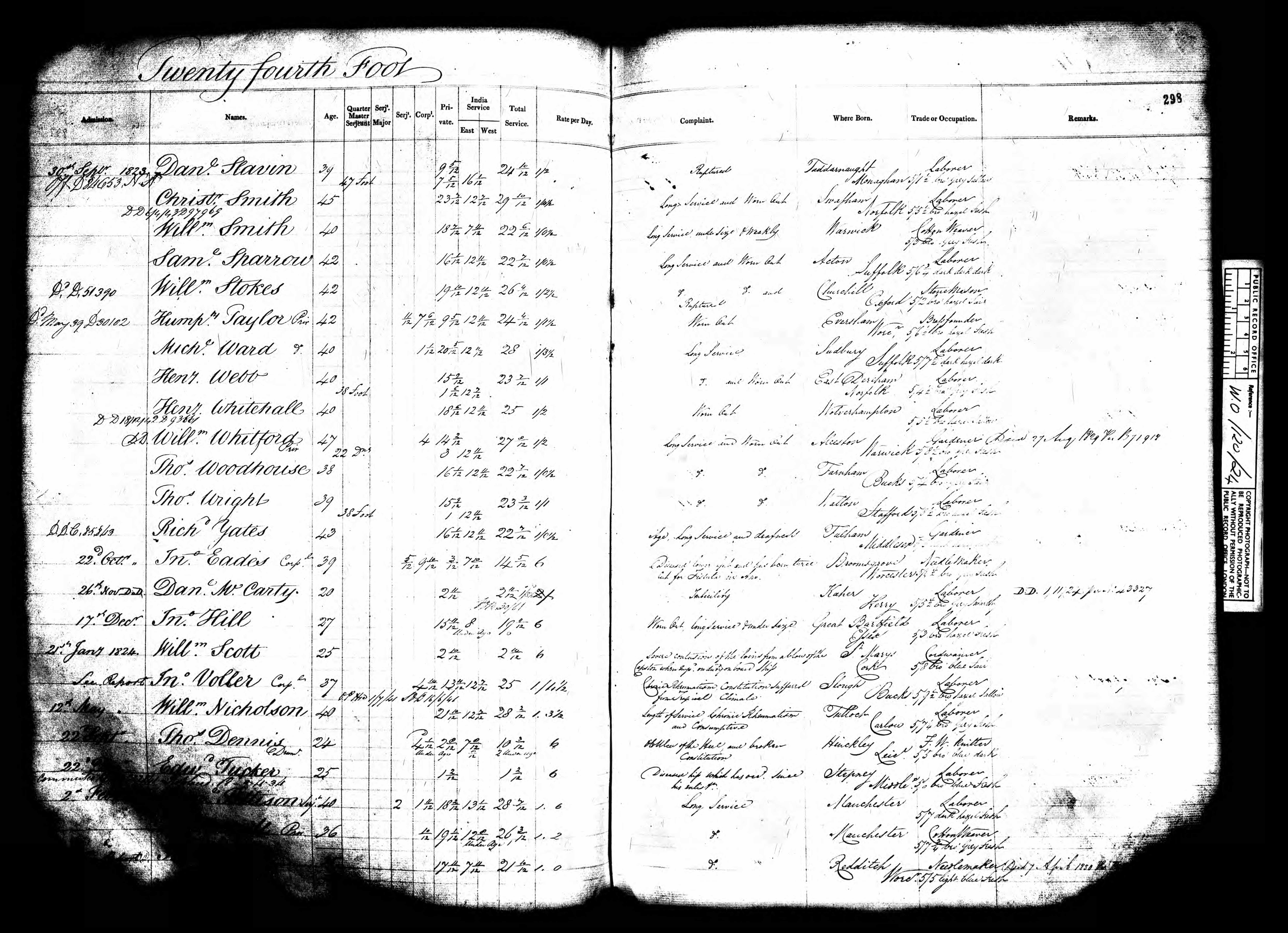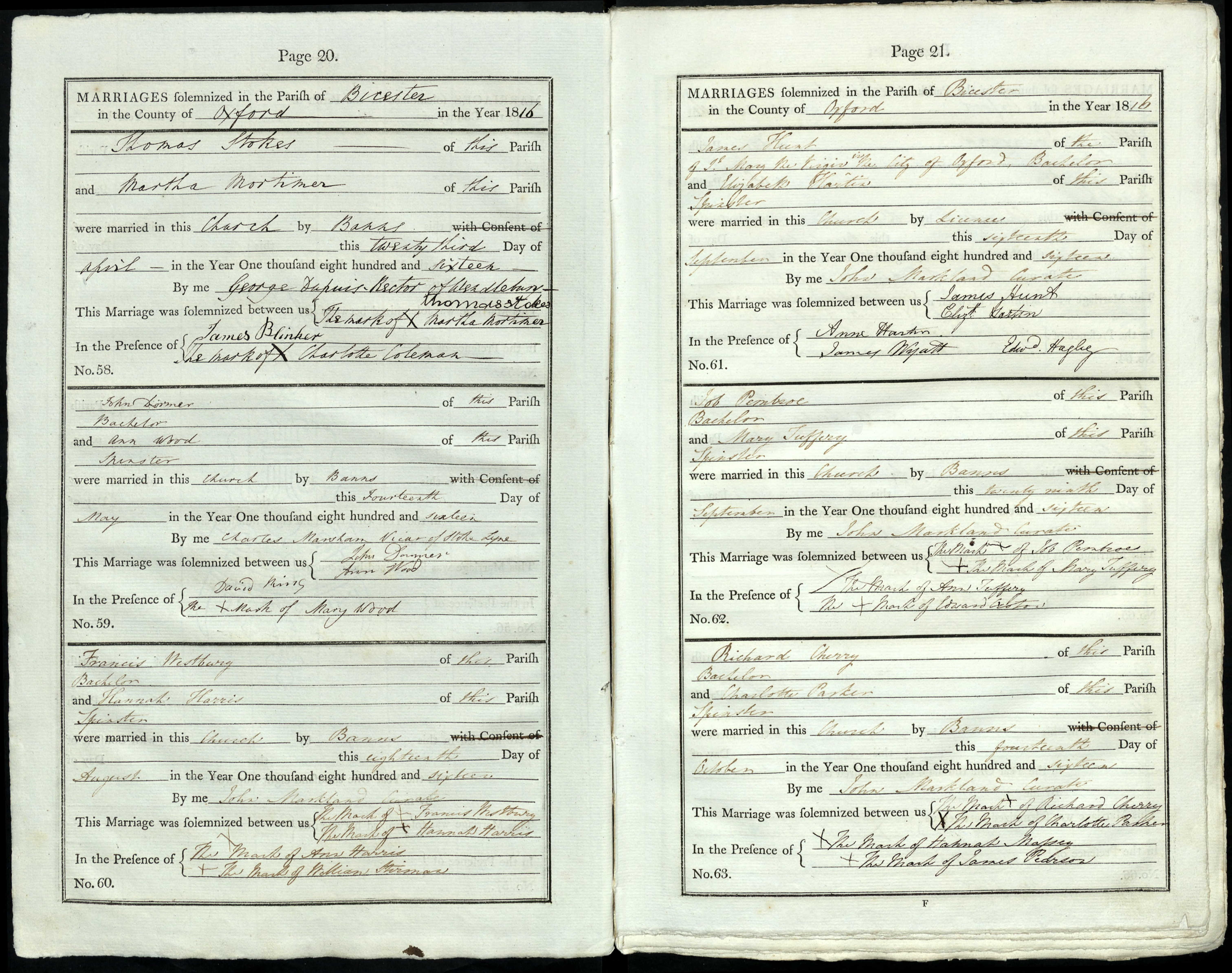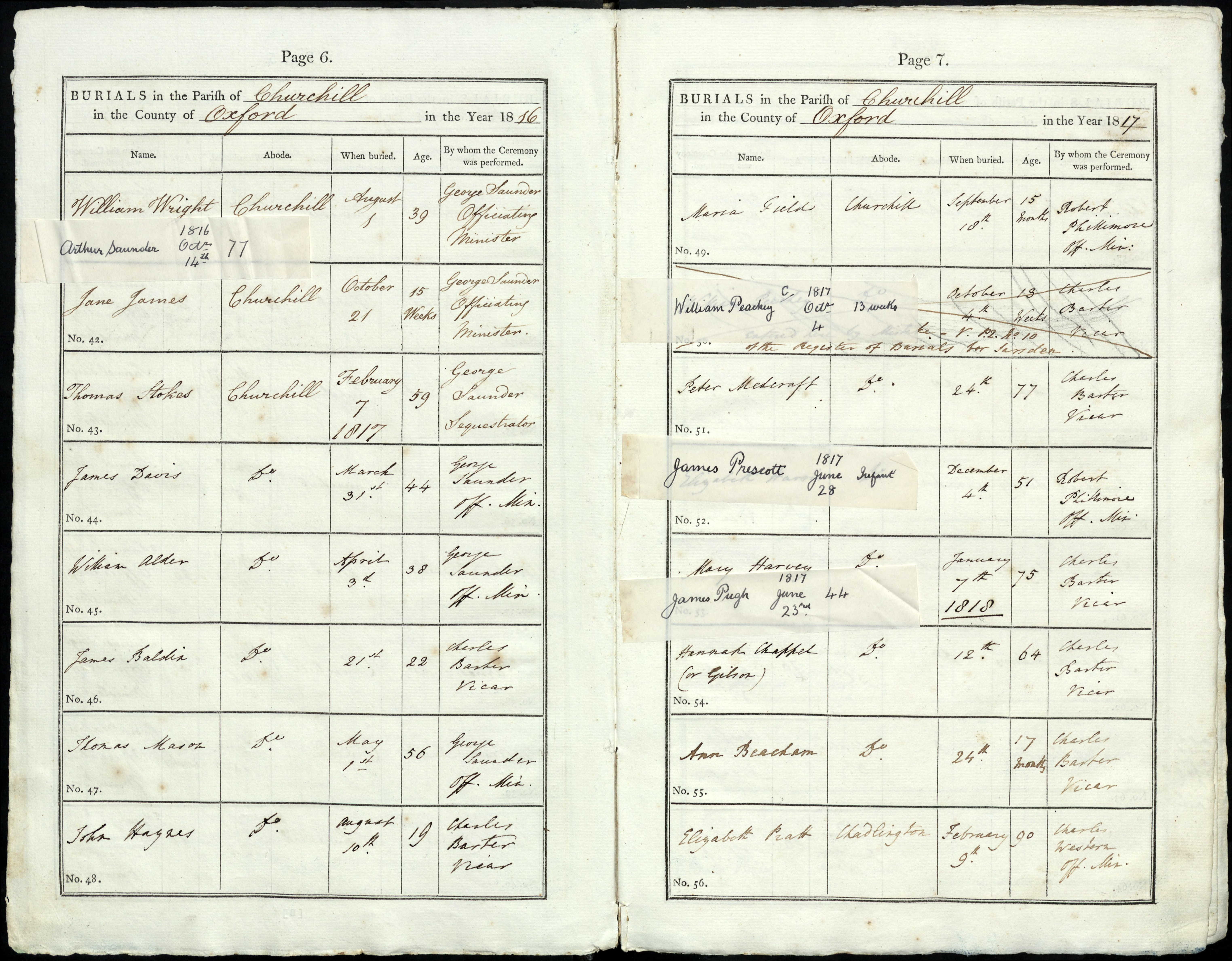William enlisted in the British Army at Woodbridge in Suffolk on 28 Nov 1803 at the age of twenty two. He was a mason by trade like his father. We can only speculate as to why he left Churchill, his family and his profession to become a soldier.
Private William Stokes (Service No 4953) served for a total of 19 years and 306 days in the 24th (2nd Warwickshire) Regiment until 29 Sep 1823. Of that 12 years 333 days was served in the "East or West Indies", specifically recorded to reflect the heightened risks of living in the tropics. He was never promoted. He was discharged "in consequence of length of service and worn out, also ruptured" aged 42. He conduct as a soldier was deemed "tolerably good".
In 1823 he is described as being about 41 years of age, 5 feet 2 inches, brown hair, hazel eyes, fair complexion and by trade a Stone Mason. He signed his own name.
While records of individual soldiers were not kept or not survived, the following gives a short history of the 24th Regiment of Foot and William's likely involvement between 1803 and 1823.
William enlisted in November 1803 following the declaration of war against France in May. There was a constant threat of invasion and the 24th Regiment had been relocated from Liverpool to Ipswich earlier that year. In November they moved to Norwich and then returned to Woodbridge, Ipswich in spring 1804. A 2nd Battalion was raised in August 1804, but William most likely served in the 1st Battalion as the 2nd Battalion wasn't deployed until 1809.
In 1805, in response to the threat to the British West Indies from the French fleet, the 24th were marched to Portsmouth and then sailed to Cork to join the expeditionary force to the Caribbean. The French squadron under Villeneuve, fearful of the British fleet, returned to Europe and the British expedition became unnecessary. It was subsequently decided to deploy 6000 troops to the Cape of Good Hope, seized by the British in 1795 but ceded to the Batavian Republic, a French vassal state, as part of the Treaty of Amiens. The troops from the 1st Battalion sailed from Cork in September 1805, and after a long delay at San Salvador (Bahia), Brazil, refitting and purchasing horses the Battalion arrived off Table Bay on 4 January 1806. The troops landed at Cape Town on 7 January and the Batavian forces surrendered on the 9th following heavy fighting in which they lost hundreds of men and three guns. The British casualties were much lighter with the 24th Foot losing 15 men. The 24th Regiment later received battle honours for this action which had effectively established British rule in South Africa for the next 100 years.
The Battalion remained in Cape Town until 10 June 1810 when the Regiment embarked for India in 5 ships: Ceylon, Astell, Windham, William Pitt and Euphrates. The Euphrates struck a rock and returned to Cape Town. The other four ships sailed up the Mozambique Channel and on 3 July 1810, when in sight of Madagascar were attacked by a French squadron consisting of two large frigates - the Bellone and Minerve of 50 guns each and the Victor of 20 guns. The battle lasted 5 hours and the Ceylon and Windham were captured along with four companies of the 24th Foot including the flanks, headquarters and 400 rank and file. The colours and regimental books were thrown overboard to prevent capture. Those captured were landed in Mauritus and remained there until the island was captured by the British six months later.
Meanwhile the Astell landed at Madras on 3 August 1810 with 300 rank and file. I believe that William was on board the Astell as his East Indies service is recorded as commencing from 2 August 1810. They then travelled to Calcutta where they were joined in January 1811 by the four companies who had been prisoners of war. The posting lasted until 1814 when the battalion was moved to Dinapur, near Varanasi, in readiness for the Anglo-Nepalese (Gurkha) War which continued until March 1816 with the signing of the Treaty of Sugauli in which a third of Nepalese controlled territory was ceded to the East India Company.
Between 1817 and 1818 a portion of the regiment was deployed to Allahabad in a campaign against the Pindarrees. In November 1819 it moved to Cawnpore (Kanpur) where it remained for two years, then moved again to Nagpur involving a march of 577 miles which took over two months to complete.
In March 1822 orders were received to embark home and the regiment left Nagpur in November 1822 taking two months to travel the 533 miles. That 483 men volunteered to remain in India in other corps suggests that life was not at all bad for the British forces in India at that time.
In February 1823 the regiment sailed for Britain in the ships George the Fourth and Charlotte arriving at Portsmouth in late July. On 22 July 1823 an inspection of the regiment, eleven sergeants, one drummer and eighty six men were invalided. William STOKES was one of these 86 men.
As a result of his service William was awarded a pension of £24 8s 0d per annum, which was paid quarterly. Curiously this seemed to be a Navy pension with his last served ship being "Wellesley", but his length of service matches to the day so there is little doubt that this is the correct record. There is also a record of his medical examination for admission into the Greenwich Hospital, and in 1829 when aged 49 there is a record of his acquiring varicose veins.
The Navy pension was paid until 31 Mar 1833 at which point a line was drawn through his pension record with an annotation of "KD 28 May 1833". It is not clear what "KD" means, although it is possible that is the date of his death.
In addition to the Navy & Royal Marine records, the Regimental Register of Pensioners from the Royal Hospital, Chelsea lists William as having a total pensionable service of 26 years 4 months, which equates to his service of 19 year 10 months plus an additional month for every two months served in the East Indies. Another record, which must have been prepared after 1838, indicates that William was active through to at least 1838. It is possible that his pension was transferred from Greenwich Hospital to Royal Hospital Chelsea administration in 1833.
A William STOKES received 3s from the Lord Clive Military Fund in 1829 which provided pensions for invalided soldiers of the East India Company. It's not clear why he would have received this having been a regular soldier, but he had served in the Gurkha War on behalf of the British East India Company and fought in at least one naval engagement on board an East India Company ship. If this was his award then he may have had the distinction of having enjoyed Army, Navy and East India Company pensions.
No record of William has been found of his life after returning to civilian life. It is possible that he returned to Churchill and there told stories of his adventures to his nieces and nephews, one of which (James STOKES b.1822) later emigrated to South Africa.

